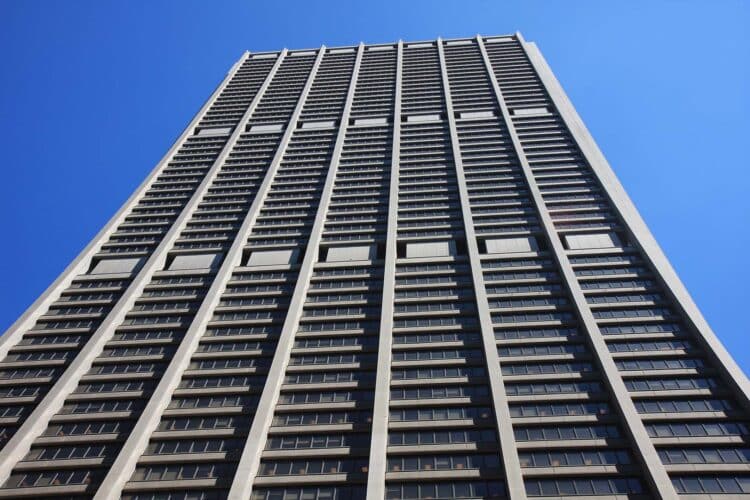Chase is a popular bank and lender for Americans. They offer several products, ranging from the traditional checking account to credit cards to mortgages.
Although it doesn’t happen often, Chase reserves the right to suspend an account at any time. Most people receive a letter in the mail with an official notice that discusses the reasons for this action.
After the account is suspended, you are effectively banned from using Chase’s banking services until the matter is resolved. If you know how to respond after a suspension, you can regain access to your account.
Chase Closed My Accounts and Banned Me – What Now?
Chase suspends accounts to ensure customer safety while working proactively to prevent illegal activities from occurring. Customers get banned when they take actions that fall outside the company’s terms of service. Most people only receive temporary restrictions, but must follow up with any requested information to restore access.
All banks and credit unions are required to monitor consumer activities. If there are any discrepancies or unusual behaviors noted, they are required to take action.
Suspended accounts can be frustrating, and every circumstance is different. The fastest way to attempt to resolve your issue is to contact Chase directly at 1 (800) 836-5656. You can also call 711 for assistance if you need to use an operator relay call.
When your account is suspended, you will not be able to perform the following actions.
- The affected account will not have access to any funds or credit.
- It is possible to have one account suspended with Chase and have others unaffected by the suspension.
- Account holders continue receiving monthly statements and updates, while any funds due will remain the same at the scheduled time.
- If you are enrolled for automatic payments, such as with a Home Equity Line of Credit (HELOC), those funds will come out as scheduled.
All suspended accounts must be reviewed to have the credit line or funds access reinstated. Until such action is taken, you’re effectively banned from your regular banking activities with Chase.
What Happens When Chase Closes All My Accounts?
When Chase detects behavior that could be due to a suspected issue of “bust-out fraud,” they will act to suspend all accounts for that person.
Bust-out fraud involves a scammer who applies for and receives a credit card through the usual channels. After paying the bills on time and using it responsibly, they receive offers to apply for other lending products.
Once enough accounts are available with a significant credit line, they use all their available limits and stop making payments.
If you recently had to max-out your credit line for a home repair or another unexpected expense, it might look like this suspicious activity.
The best way to prevent your accounts from being suspended or banned is to contact Chase before approving the purchase. Let the bank know what is happening and how much you expect to spend.
This call should prevent any further issues from happening with your account.
Bust-out fraud looks at these suspicious activities to identify high-risk accounts and potentially ban those consumers.
- Unusual purchase amounts, like spending $1,500 at a local bakery.
- Large transactions that happen in a foreign country or a different state.
- Multiple payments within a single billing period from different sources or accounts.
- Frequent use of cash advances or convenience checks.
It is also possible to score different accounts for this risk of fraudulent behavior by using payment data, internal transaction information, and credit scores.
If you have recent credit line increases, utilization changes, balance growth, or lots of new accounts, the predictors can be observed for months or years through algorithmic predictions.
That means you could apply for a new Chase card after using one successfully for several years, have your credit evaluated, and a suspension occurs.
Although this suggestion is conjecture, it does fall in line with the anecdotal evidence supplied by people who have had their accounts suspended and banned.
How to Avoid Getting Your Accounts Suspended
The best way to avoid having problems with your Chase account getting suspended and banned is not to display the triggering behaviors. Although each situation is different, the following options will help your finances look strong without raising any red flags.
1. Keep Your Credit Clean
An ideal credit report shows a few potential flaws while offering a repetitive pattern of payments and handling responsibilities. You will want to limit new inquiries and accounts while keeping your credit utilization relatively low.
Instead of canceling an old credit card that you’re not using, keep them alive with the occasional small purchase. You can pay off the amount within the grace period or let it run a billing cycle.
Some credit cards close automatically without any activities in six months or more.
When you apply for new lending products, a “hard inquiry” appears on your credit report. Unless you need new credit, you should avoid having these items. They typically stay there for a couple of years before disappearing.
If you must apply for multiple credit lines, it sometimes helps to do it all at once from the same lender. This activity often results in a single hard inquiry.
2. Keep New Accounts Low
Bust-out fraud relies on having several new accounts issued with reasonably high credit limits. If you don’t need extra credit, don’t apply for it. Chase and other lenders look at your total utilization to see what is available.
If you already have $40,000 in limits and apply for more, that action raises a potential red flag.
If you have a small business or a side hustle, you can apply for credit under that name. This issue can limit some bust-out suspensions, but it might not prevent all of them. Some lenders and credit card issuers still send updates about these accounts to the credit reporting bureaus.
The best way to avoid having business activities on your personal credit report is to incorporate the business.
An LLC is the most affordable option. If you’re a sole proprietor or a partnership, the credit line is still considered a personal asset.
3. Spend with Predictable Behavior
Credit cards are helpful for unexpected expenses. If you use the occasional convenience check or need a cash advance because you forgot your wallet, most banks (including Chase) won’t hold that against you.
Items like that are best avoided because you’ll pay fees and interest on the amount without earning any rewards. If they’re used constantly, it could be a signal that you’re trying to bilk the bank out of some money.
If you spend convenience checks at high-risk or high-value merchants, there is a bigger risk of having an account come under review.
This issue could be from an internal list or be based on your shopping behaviors. A sudden jump in spending often looks suspicious.
When you pay your bills with Chase and other lenders, try to use a single source. Make one or two payments monthly whenever possible.
4. Use Only What You Need
Chase uses signup offers to encourage customers to switch banks. It’s a tactic that most businesses in the lending world use to gain some business. They want people to spend money on credit so that the interest charges develop profits.
If your credit report shows a lot of new accounts or recent inquiries, it could cause Chase to second-guess an offer.
Instead of awarding you with a new credit line or account, you might be dealing with a suspension and ban.
5. Pay By the Deadline
Credit card companies have more grace periods now than before, but you still need to get those monthly payments in by a specific date. If you miss a payment, they can charge late fees and increase your balance.
If you miss more than one payment in a 12-month period, you could find the account suspended.
This issue comes back to risk again. If you’re not making payments and spending money on a credit card, it looks like you don’t have any cash available. Chase and other lenders move quickly to prevent potential losses.
How to Initiate the Recovery Process with Chase
For many customers, the primary reason why an account gets suspended or banned is due to rapid use of credit utilization while having a returned payment. Those items together often spell disaster, even if the outcome was unintentional.
You’ll need to contact Chase customer support to start the recovery process. If you received a letter with instructions to follow, those steps might be implemented before any further action can occur.
The best step you can take is to pay off as much of the balance remaining as possible as a sign of goodwill. By showing Chase that you want to take care of the balance, you can typically avoid a long-term ban.
Paying a portion of the balance or the minimum due is not usually enough to reverse a suspension or ban, especially if it was triggered by a return payment.
Most people have 30 days to ask for their account with Chase to get reinstated. If you don’t apply for this option and start paying down the balance, the institution could decide to deny the request.
Almost everything involves risk when dealing with credit cards and lending products. A returned payment shows that you’re broke.
That almost guarantees you will get shut down from any future spending. Unless you also have a checking and a savings account with Chase, there is no visibility on your everyday spending and budgeting.
If you can pay after a returned fee, it might be better to use secured funds and act as quickly as possible. The best chances for a positive resolution occur within 24 hours.
How to Handle a Closed Account Successfully
Chase and other banks use financial information to evaluate risk. When a person’s accounts fall into a positive category, they’ll have easy access to the funding and cash liquidity needed for purchases. If the data puts someone into an adverse category, the account could be suspended or banned.
We were in Las Vegas for a business conference. It was maybe 2014. One of the casinos had a NASCAR-themed restaurant at the time, so we decided to have dinner there one evening.
The meal was decent, although race-inspired nachos were really just round tortilla chips. Although the prices were high, it wasn’t stratospheric like they can be at other restaurants in the city.
I pulled out my credit card to pay for the meal. A couple of minutes later, the waiter returned and told me it had been declined.
Apparently, our travel stipend hadn’t been paid. I explained the situation, got a shrug, and sent all my credit cards over for processing. They were all declined.
That’s when I called Chase directly. They told me that even though I had an open balance, the declines had triggered a credit report, so it was decided to suspend my account.
The issue had happened over the span of 30 minutes. I was shocked that it could happen so fast.
I explained to the rep our circumstances and the money we were expected to receive. They called my references, who confirmed the information. They pulled the suspension, we were finally able to pay for our food, and decided to call it a night.
Whenever you have an account suspended or closed, it helps to be as proactive as possible. Take immediate steps to clear the situation. If that doesn’t work, transfer rewards and whatever else you have to another bank to start over.


